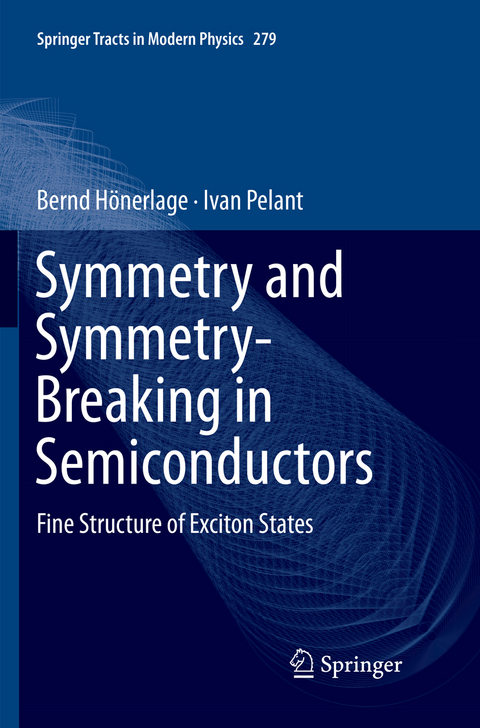
Symmetry and Symmetry-Breaking in Semiconductors
Springer International Publishing (Verlag)
978-3-030-06817-2 (ISBN)
This book discusses group theory investigations of zincblende and wurtzite semiconductors under symmetry-breaking conditions. The text presents the group theory elements required to develop a multitude of symmetry-breaking problems, giving scientists a fast track to bypass the need for recalculating electronic states. The text is not only a valuable resource for speeding up calculations but also illustrates the construction of effective Hamiltonians for a chosen set of electronic states in crystalline semiconductors.
Since Hamiltonians have to be invariant under the transformations of the point group, the crystal symmetry determines the multiplet structure of these states in the presence of spin-orbit, crystal-field, or exchange interactions. Symmetry-breaking leads to additional coupling of the states, resulting in shifts and/or splittings of the multiplets. Such interactions may be intrinsic, as in the case of the quasi-particle dispersion, or extrinsic, induced by magnetic, electric, or strain fields. Using a power expansion of the perturbations these interaction terms can be determined in their parameterized form in a unique way. The hierarchic structure of this invariant development allows to estimate the importance of particular symmetry-breaking effects in the Hamiltonian. A number of selected experimental curves are included to illustrate the symmetry-based discussions, which are especially important in optical spectroscopy.
This text is written for graduate students and researchers who want to understand and simulate experimental findings reflecting the fine structure of electronic or excitonic states in crystalline semiconductors.
Prof. Dr. Bernd Hönerlage is emeritus at the University of Strasbourg and former senior researcher at the CNRS (France). His research focuses on ultrafast dynamics in bulk semiconductors and nano-objects, especially the non-linear optics and time resolved spectroscopy of bulk semiconductor material and nano-crystals. He has more than 30 years of teaching experience in condensed matter and nano-physics. Prof. Dr. Ivan Pelant is senior researcher at the Institute of Physics of The Czech Academy of Sciences and Professor of Quantum Optics and Optoelectronics at Charles University, Prague (Czech Republic). His research focuses on optical properties of semiconductors, non-linear optics, nanostructures and nanophotonics.
Introduction.- Symmetry-Breaking in Spin-Degenerate Conduction-Bands of Zincblende-Type Crystals.- Symmetry-Breaking Effects in Valence Bands of Zincblende-Type Crystals.- Exciton Ground State in Zincblende-Type Semiconductors.- Pseudo-Spin Development of the Exciton Ground State in Zincblende-Type Semiconductors.- Invariant Expansion and Electron-Band Structure Effects in Wurtzite-Type Semiconductors.- Excitons in Wurtzite-Type Semiconductors.- Light-Matter Interaction and Exciton-Polaritons in Semiconductors.- Appendix.- Index.
| Erscheinungsdatum | 28.02.2019 |
|---|---|
| Reihe/Serie | Springer Tracts in Modern Physics |
| Zusatzinfo | XV, 240 p. 55 illus. |
| Verlagsort | Cham |
| Sprache | englisch |
| Maße | 155 x 235 mm |
| Gewicht | 397 g |
| Themenwelt | Naturwissenschaften ► Chemie ► Analytische Chemie |
| Naturwissenschaften ► Physik / Astronomie ► Atom- / Kern- / Molekularphysik | |
| Naturwissenschaften ► Physik / Astronomie ► Festkörperphysik | |
| Technik ► Elektrotechnik / Energietechnik | |
| Schlagworte | Creating Effective Hamiltonian • Effective Hamiltonian Semiconductor • Exciton Semiconductor • Hamiltonian Crystalline Semiconductor • Hamiltonian Wurtzite • Hamiltonian Zincblende • Symmetry Breaking Conduction Band • Symmetry Breaking Valence Band |
| ISBN-10 | 3-030-06817-X / 303006817X |
| ISBN-13 | 978-3-030-06817-2 / 9783030068172 |
| Zustand | Neuware |
| Haben Sie eine Frage zum Produkt? |
aus dem Bereich


